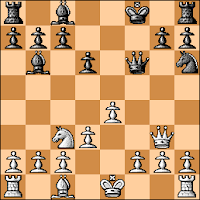Wow.
The other day I received an email from Yury V. Bukayev, in Russia, suggesting the description "Jerome-Kennedy Gambit in different opening systems."
It was similar to the encouragement that Bill Wall made a while back, that we begin to talk about the "Jerome-Kennedy Gambit" when we look at 1.e4 e5 2.Nf3 Nc6 3.Bc4 Bc5 4.Bxf7+, in the manner of the "Smith-Morra Gambit".
Thanks, guys.
For now, I'd like to stick with using Alonzo Wheeler Jerome's name for the gambit, as I further research his efforts: the earliest being analysis published in the 1874 issue of the Dubuque Chess Journal, and the latest (that I have found) a correspondence game against readers in the Literary Digest in 1900.
As I noted in my afterward to the posts on the Literary Digest game [1, 2, 3, 4], Mr. Jerome has had a hard time holding on to "his" opening: sources such as Cook's Synopsis of the Chess Openings (1882), The American Supplement (1884), and Freeborough and Rankin's Chess Openings Ancient and Modern, (1889) were happy to keep the name "Jerome Gambit", but identified the chief analyst of the opening as "Mr. S. A. Charles of Cincinnati, Ohio." Sic transit gloria mundi.
Plus,
However...
If my Jerome Gambit article ever appears [insert laugh track] in Kaissiber, or if I do succeed in completing a book on the Jerome Gambit and it's relatives; then, I'd consider adding my name...
graphic by Geoff Chandler












































